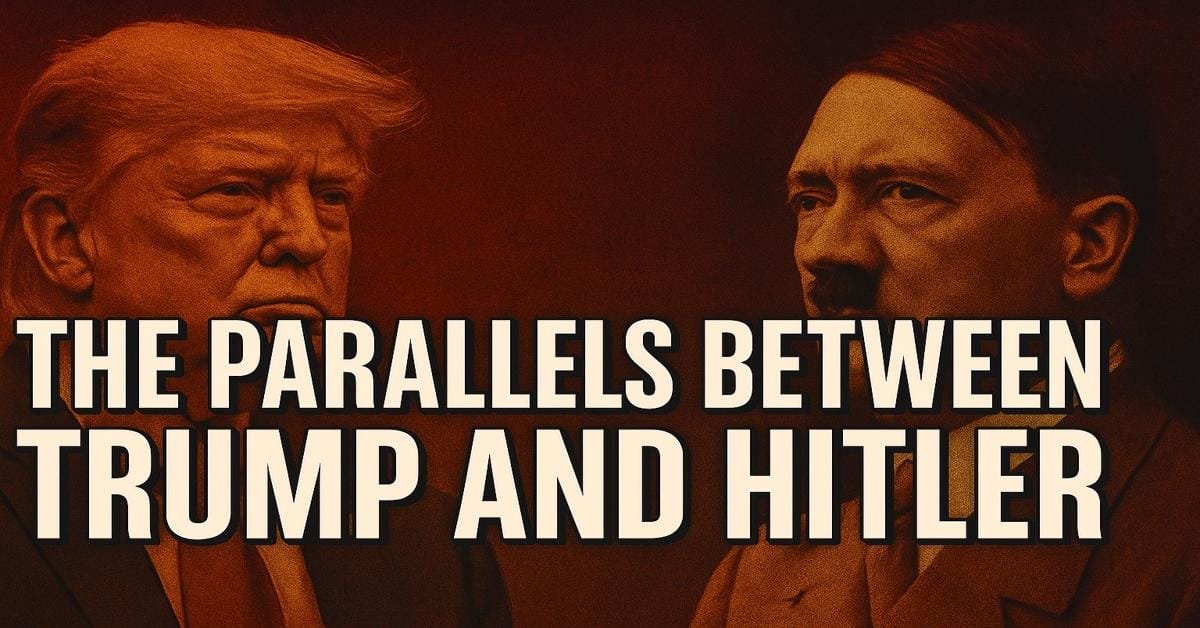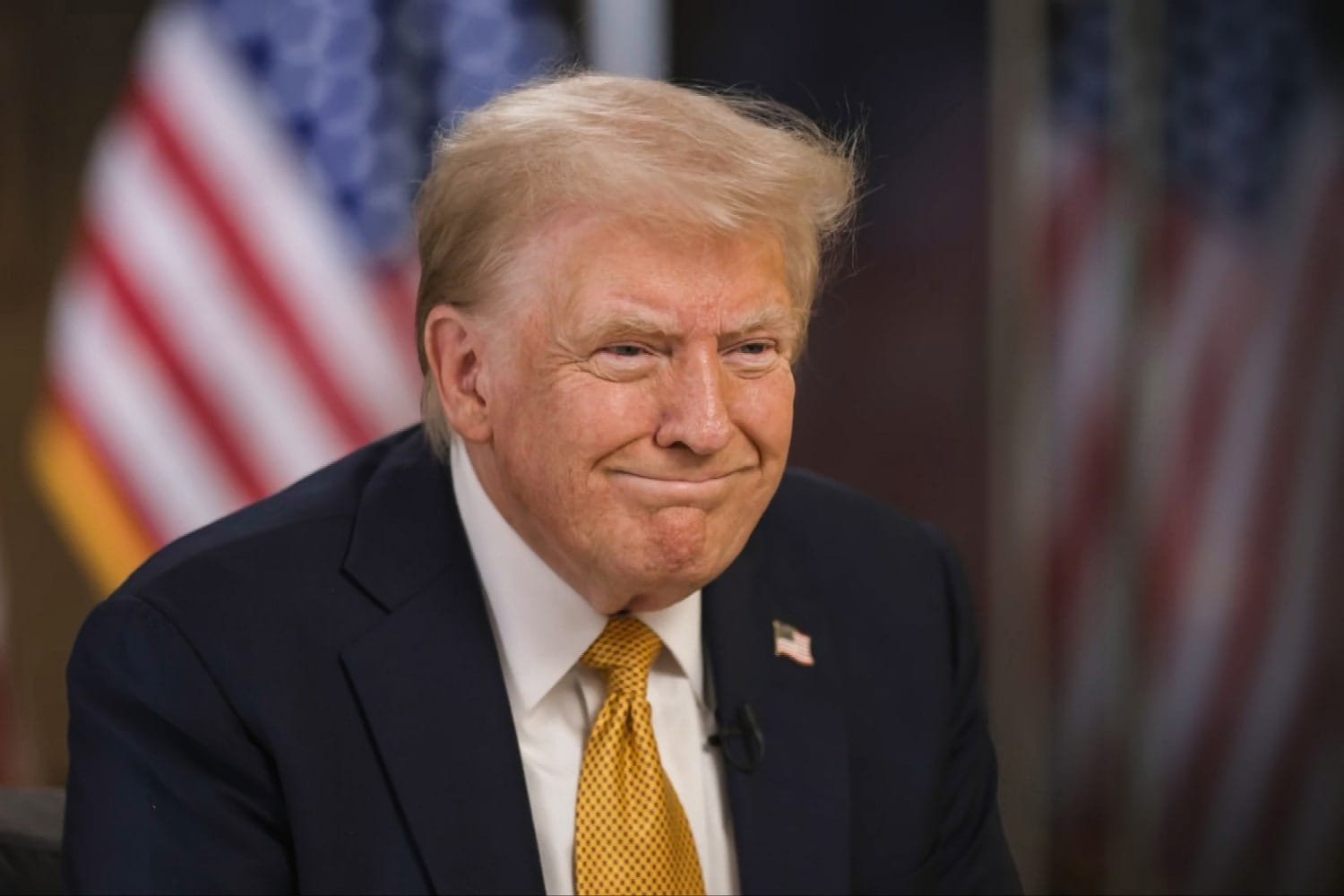Trump, Hitler, Mein Kampf, and Project 2025
When analyzing democratic backsliding, the rise of populist-authoritarian styles, and ideological blueprints for power, Project 2025 and Mein Kampf, many observers draw analogies between Donald Trump and Adolf Hitler. More recently, the policy blueprint known as Project 2025 has entered the discourse—and critics have likened it to a modern counterpart of Hitler’s Mein Kampf. By weaving together rhetorical, institutional, and ideological threads, one can see how these parallels illuminate risks to liberal democracy, while also underscoring essential distinctions.
1. Mein Kampf as Ideological Blueprint
Mein Kampf (My Struggle), originally written by Adolf Hitler during his imprisonment in the 1920s, served as a manifest and ideological roadmap. It articulated Hitler’s worldview: ultra-nationalism, racial hierarchy, anti-Semitism, anti-communism, Lebensraum (living space), and the necessity of a totalitarian Führer. EL PAÍS English+1 The text functioned not just as autobiography but as a quasi-strategic plan for transforming Germany’s institutions and society.
Historians note that while Mein Kampf does not explicitly lay out the full machinery of genocide (that evolved later), it contains the logical architecture of exclusion, conquest, and hierarchical supremacy. EL PAÍS English Its value, for Hitler and the Nazi movement, lay in providing rhetorical coherence, galvanizing cadres, and justifying radical policies.
In subsequent years, the Nazi regime used Mein Kampf as a canonical ideological touchstone, reinforcing its narrative and moral claim to authority.
2. Project 2025 as a Contemporary Manifesto
Project 2025 (also called the Mandate for Leadership 2025) is a more than 900-page policy and personnel blueprint produced by conservative think tanks (notably the Heritage Foundation) in collaboration with former Trump aides. The TRiiBE+3PBS+3American Civil Liberties Union+3 Its explicit goal is to reconfigure the executive branch in a potential future Trump administration, pushing for sweeping structural changes from Day One. The TRiiBE+2The Guardian+2
Key features include:
- Centralizing executive authority: Project 2025 proposals to bring independent agencies under presidential control, eliminate career protections for large portions of the civil service, and install ideologically vetted appointees. Vreme+3The Guardian+3PBS+3
- Dismantling regulatory oversight: Project 2025 suggestions to weaken or eliminate agencies like the Department of Education, the Environmental Protection Agency, and other bodies seen as “activist” bureaucracies. Vreme+4The Guardian+4PBS+4
- Expansion of executive power over DOJ and courts: Project 2025 plans to discipline or remove “leftward” prosecutors, exert control over attorneys general, and stack the federal judiciary with loyalists. PBS+2The Guardian+2
- Immigration, social, and culture policy: Project 2025 aggressive deportation, restrictions on abortion, rollbacks of LGBTQ+ protections, limiting diversity or equity initiatives, and emphasizing “America First” constitutional reinterpretations. American Civil Liberties Union+3The TRiiBE+3The Guardian+3
Because the Project 2025 is so detailed and ambitious, critics have argued that it functions not merely as a policy outline but as a quasi-ideological manifesto: in effect, Project 2025 = “Mein Kampf 2.0.” Medium+2Vreme+2
One article titles it explicitly “Blueprints for Authoritarianism: Mein Kampf and Project 2025.” CounterPunch Another commentary describes it as “Project 2025: Mein Kampf 2.0 — A Threat to the U.S. Constitution.” Medium
3. Rhetorical & Ideological Parallels
a. Nationalism, Exclusion & “Othering”
Both Mein Kampf and Project 2025 employ rhetorics of national rebirth, purification, and existential threat. Hitler’s language demonized Jews, Communists, and other “enemies within” as poisoning the social body. Project 2025 similarly frames progressivism, global elites, “woke ideology,” and illegal immigration as existential corruptions of the American nation. The Guardian+3Schools-History.Com+3Vreme+3
The logic is analogous: to mobilize and polarize by delineating a pure “us” vs. a corrupt “them.” Mein Kampf does so in racial and conspiratorial terms; Project 2025 does so in political-cultural and ideological terms.
b. Centralization of Authority
Hitler proposed dissolving parliamentary constraints and consolidating power under the Führer as part of his revolutionary agenda in Mein Kampf. Schools-History.Com+2EL PAÍS English+2 Project 2025 echoes this with calls to collapse bureaucratic independence, replace professional merit systems with loyalty-based appointment, and deploy a unitary executive model. Critics argue this undermines separation of powers—one of the core defenses of liberal democracy. The Guardian+2PBS+2
c. Propaganda & Control of Narrative
Hitler stressed the indispensable role of propaganda in Mein Kampf. The Nazi regime institutionalized media control, censorship, indoctrination, and suppression of oppositional voices. Schools-History.Com+2EL PAÍS English+2
While Project 2025 does not openly call for state propaganda organs, its structural proposals—especially to bring DOJ, regulatory agencies, and education systems under control—could create the conditions for narrative control, suppression of dissent, and narrowing public discourse. The Guardian+3Schools-History.Com+3The TRiiBE+3
d. Cult of the Leader & Mobilization
Hitler’s Mein Kampf is suffused with the notion of the charismatic leader embodying the national will, a fusion of leader and people. Project 2025 proposals operate under the assumption that a future Trump (or equivalent leader) will orchestrate, command, and guide the redesigned state apparatus. The goal is not just governance, but mobilization — a state apparatus attuned to the leader’s purpose, not independent checks.
Rhetorically, Trump has mirrored Hitler’s language in describing immigrants as “poisoning the blood of our country” and referring to opponents in dehumanizing terms. Critics observe that some of Trump’s language echoes Mein Kampf’s style and strategic use of incendiary statements. The TRiiBE+4ABC News+4The Guardian+4
4. Trump–Hitler Parallels (With Context)
Beyond the Mein Kampf ↔ Project 2025 link, the original comparison between Trump and Hitler rests on recurring patterns:
- Dehumanizing rhetoric: Trump’s repeated use of terms like “vermin,” “poisoning the blood,” and “the enemy within” revives linguistic strategies found in fascist propaganda. CounterPunch+3ABC News+3The Guardian+3
- Undermining elections & institutions: Trump’s attempts to overturn the 2020 election and his praise for the January 6 insurrection reflect tactics seen in authoritarian transitions.
- Charismatic spectacle: Like Hitler’s orchestrated mass rallies, Trump’s blend of theater, intimidation, and emotional appeal transforms politics into a performance. The Guardian+2CounterPunch+2
- Scholarly debate over fascism: Some analysts view Trump as embodying “fascistic” features—authoritarian impulses, contempt for opposition, mobilization of grievance—while others argue he lacks the ideological coherence, structure, and violence of classical fascism. The TRiiBE+4The Guardian+4Wikipedia+4
The incorporation of Mein Kampf / Project 2025 into this framework deepens the understanding: it shifts the lens from behavior and style alone to competing blueprints for institutional takeover.
5. Strengths & Limits of the Comparison
Strengths
- Illuminates structural ambition: Project 2025 forces us to see not just inflammatory speech, but a plan to reshape institutional architecture. That echoes how Mein Kampf underpinned Nazi institutional ambitions.
- Highlights rhetoric’s power: The comparison sharpens our sense of how language, myth, and exclusion can become tools of governance.
- Prompts vigilance: By situating Project 2025 in continuity with fascist-style blueprints, the analogy warns us that threats may be procedural and legal—not just overt violence.
Limitations & Cautions
- Historical and moral singularity: Mein Kampf is part of a genocidal, totalitarian system that escalated far beyond anything Project 2025 (as currently proposed) advocates. Equating them uncritically can trivialize the Holocaust and the extremity of Nazi Germany.
- No explicit call to genocide: Project 2025 does not call for mass extermination or racial war, whereas Mein Kampf is tied to ideologies that evolved into genocide.
- Democratic constraints: The U.S. retains institutional checks, separation of powers, free press, civil society, and legal constraints that did not exist in 1930s Germany in the same way.
- Uncertainty of realization: Many of Project 2025’s proposals are aspirational. Whether they could survive judicial, political, and public resistance is unknown.
6. Integrated Narrative: Trump, Mein Kampf, and Project 2025
When recasting the Trump–Hitler analogy through the lens of Mein Kampf and Project 2025, we get a more fleshed-out risk matrix:
- Mein Kampf functioned not just as autobiography but as ideological architecture.
- Project 2025 reads in many respects as a modern policy manuscript: reorganize the state, centralize power, purge disloyal elements, codify ideological dominance.
- Trump’s rhetorical strategy mirrors the style: exclusion, conspiracy, spectacle, persona.
- The nexus is that Project 2025 attempts to convert populist momentum (Trump’s speech, campaign energy) into bureaucratic control and institutional lock-in.
- In Hitler’s case, Mein Kampf supplied intellectual and moral justification for radical political transformation—Project 2025 seeks to do the same in American conservative terms, using executive control rather than open violence.
7. Conclusion & Reflection
The parallels between Trump and Hitler remain provocative—and with Project 2025 entering the picture, they grow more substantive. Mein Kampf was not just a manifesto, but a blueprint; Project 2025 may function much the same in a contemporary setting.
Yet any comparison must be wielded carefully. The tragedies of Nazi Germany are uniquely horrific; American democracy, while under strain, has institutional cushions and a stronger civil society legacy. The comparison is not one of equivalence, but of warning: a democracy can be undone not by bombs alone, but by legalism, ideology, and structural capture.



